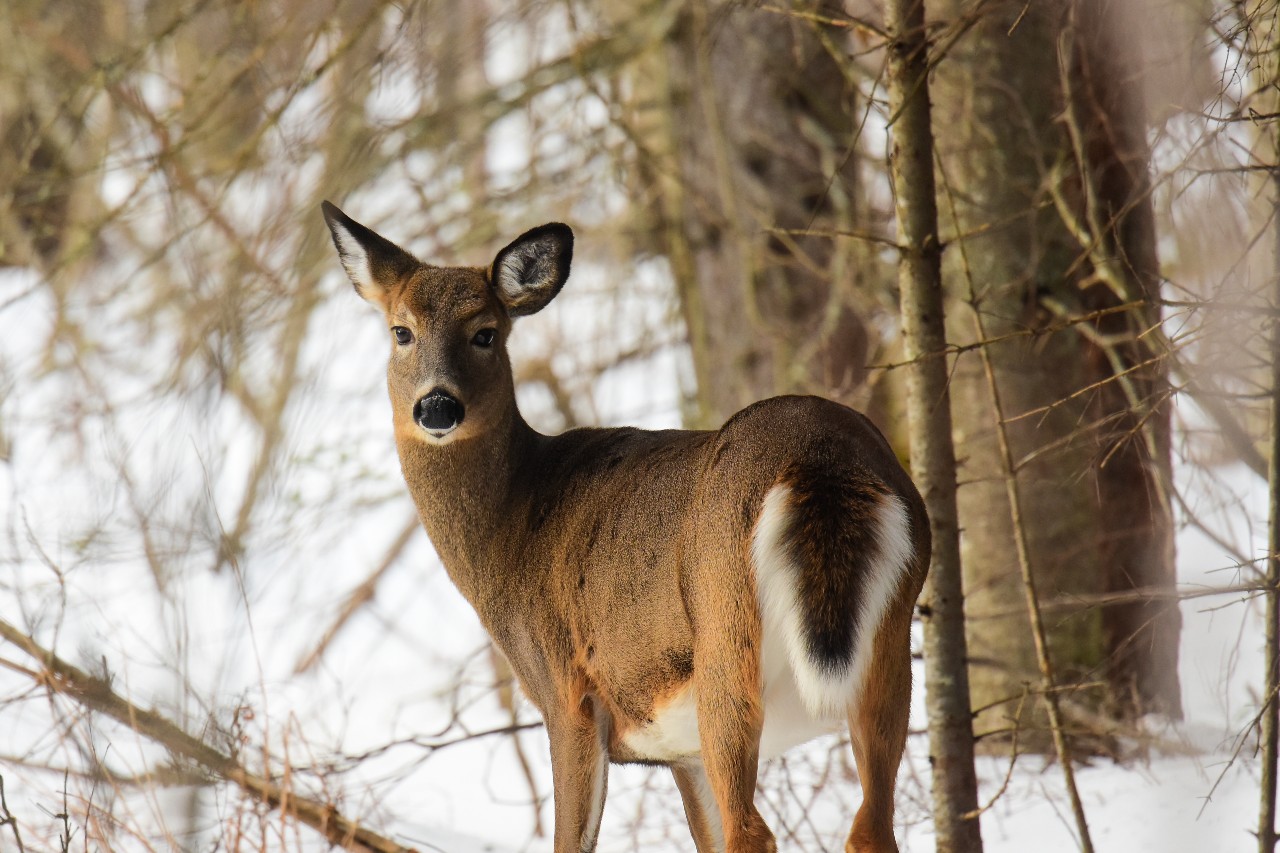Where Does a Whitetail Deer Live?
The white-tailed deer, also known by its scientific name, Odocoileus virginianus, is one of the most iconic and widely recognized native mammal species in North America. Because of its graceful beauty and remarkable adaptability, the white-tailed deer has won the affection of people who appreciate wildlife. This includes both hunters and wildlife enthusiasts. It is essential for understanding this magnificent creature to investigate its habitat, which comprises the numerous ecosystems in which it lives and thrives. Let us go on an expedition to discover the various habitats white-tailed deer call home, from forests to grasslands.
- The Woodlands are a Refuge for Whitetail Deer.
When you think of the white-tailed deer’s natural habitat, dense forests are likely the first thing that comes to mind. White-tailed deer are ideally suited to exist in forests due to the abundance of cover, food, and shelter in these ecosystems. These deer are particularly drawn to deciduous and mixed woodlands, characterized by various deciduous tree species. Whitetail deer can flourish in these woods because they provide a diverse and nutritious food source, such as leaves, twigs, fruits, and nuts.
Deer can find the essential shelter they require to avoid being devoured by predators, safeguard their young from harsh weather, and raise their young in forested environments. Due to the effective concealment of dense undergrowth in these woods, whitetail deer can avoid predators and remain safe. Additionally, the terrain, comprised of dense vegetation and natural features such as fallen trees, resembles a labyrinth, allowing them to navigate their environment easily.
- They Consider Both Grasslands and Farmlands to be Edge Habitats.
Whitetail deer’s ability to colonize regions other than forests demonstrates the species’ adaptability. Examples of habitats that fall into this category include grasslands and farmlands. Whitetail deer are attracted to “edge habitats,” which offer diverse resources and are therefore commonly referred to as “edge habitats.”
Due to the diversity of herbaceous plants in grasslands, deer can acquire a more diverse diet and improve their overall nutrition by foraging there. At specific periods of the year, agricultural fields containing crops such as soybeans, corn, and alfalfa provide abundant food. These peripheral habitats receive abundant sunlight, allowing the growth of nutrient-rich plant life vital to the survival of the deer population.
- Wetlands: An Ecosystem at the Water’s Edge
White-tailed deer thrive in various wetlands, including marshes, swamps, and riverbanks. These regions are distinguished by the abundance of water sources, which provide deer with hydration and nourishment in vegetation. It is common knowledge that whitetail deer will wade through waist-deep water to obtain aquatic vegetation, which improves their diet.
In addition, wetland ecosystems typically provide dense cover in the form of cattails and other aquatic plants. This camouflage is essential for deer to avoid being attacked by predators while suckling their young and to maintain their body temperature in harsh environments. Wetlands are essential to whitetail deer’s habitat because they provide favorable nutrition, water, and shelter conditions.
- Urban Environments: Acclimating to Being So Close to Other Individuals
In recent years, whitetail deer have established colonies in urban areas, demonstrating the remarkable adaptability of this species. In recent years, these deer have settled in suburban neighborhoods with open fields, parks, and sections of forest. Deer’s adaptability to different environments is demonstrated by their presence, which can elicit diverse community responses.
Urban environments are home to a variety of resources. Food can be found in cultivated gardens and vegetation, while shelter can be found in artificial structures and densely populated areas. Nonetheless, the expanding interaction with human populations presents new challenges, such as a greater risk of property harm and traffic-related accidents.
Conclusion
The habitat of the white-tailed deer is a stunning place comprised of diverse landscape types. These majestic creatures have discovered ways to thrive in various habitats, from the depths of dense forests to the edges of expansive grasslands, from the tranquility of wetlands to the outskirts of urban areas. Their capacity to flourish in various environments demonstrates their resiliency and significance in the natural world.
In addition to enhancing our appreciation for the natural beauty of the whitetail deer, understanding the various ecosystems in which they reside illuminates the tenuous relationship between wildlife and the ecosystems in which they reside. As environmental custodians, we must ensure these ecosystems remain natural and continue supporting life. Only then can we ensure that the world continues to be graced by white-tailed deer and countless other species.
Squaw Mountain Ranch is Home for Whitetail Deer.
SMR offers discerning hunters unique animal excursions. In exotic and whitetail deer hunting at SMR, we treat each customer individually. We guarantee a fair chase mission to give unique hunters trophies for their Trophy Rooms. Squaw Mountain Ranch is happy to offer Trophy exotic hunts at an affordable price with five-star service and an unequaled experience. Call for current market pricing.

